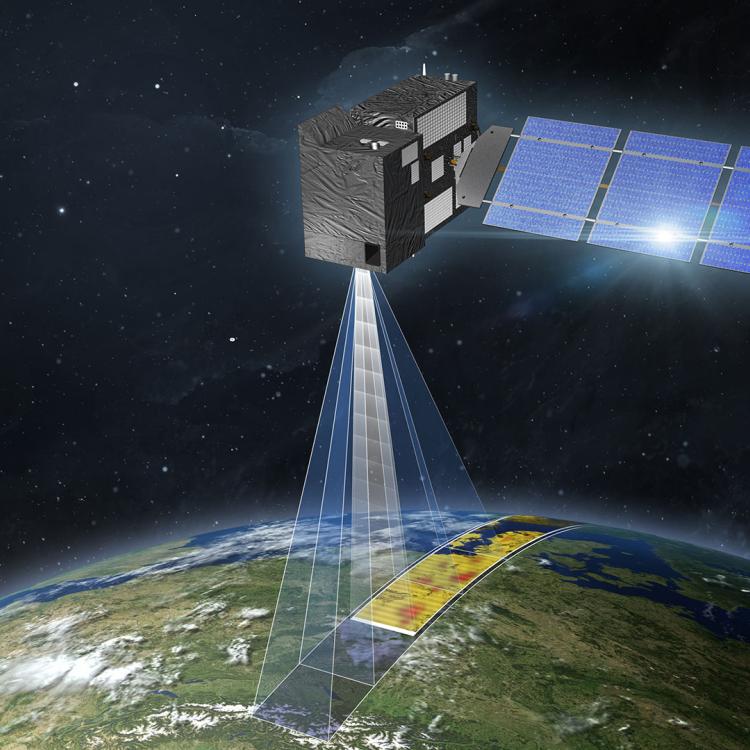16 February 2023
10 May 2021
This study provides scientific support in establishing the requirements and algorithm for cloud products derived from the CLIM instrument on the CO2M mission. These products will support the retrievals of the main XCO2, XCH4 and NO2 products by identifying the presence of cloud and, in addition, by quantifying how much the observed atmosphere deviates from the clear-sky atmosphere. The latter is a generic concept developed within the Sentinel-3 Synergy Cloud Mask Development project, which is termed obstruction.
Phase 1 of this work was a sub-study of the Copernicus Sentinel-3 Synergy Cloud Mask Development project. Phase 2 will be organised as a dedicated contract.
Objectives
The objectives of this study are:
- Initial development of the CLIM cloud mask and cloud obstruction algorithm, based on traditional cloud tests and the new S3-SYN-CM approach.
- Subsequent optimisation of the algorithm.
Overview
Phase 1 overview
During this phase, the study supported the development of the CLIM cloud detection algorithm and the provision of a corresponding initial Algorithm Theoretical Baseline Document (ATBD). The work was based on the re-use of information collected in the framework of the EUMETSAT study Sentinel-3 Synergy Cloud Mask Development (S3-SYN-CM) , to set up the CLIM cloud detection algorithm in a fast and efficient way.
The S3-SYN-CM approach can be adopted because CLIM is equipped with a set of channels that represent a sub-sample of the channels available in the S3 OLCI/SLSTR synergy dataset. Moreover, the S3-SYN-CM study has provided a flexible cloud masking approach suitable for both clear-sky conservative (e.g. SST and ocean colour retrievals) and cloudy-sky applications (e.g. cloud properties retrievals). Therefore, information collected in the context of the S3-SYN-CM study contains all necessary elements to set up a cloud masking approach for CLIM and the developed methods will be directly applicable to CLIM, although in a simplified form.
The study developed a cloud detection algorithm for CLIM taking into account:
- The specific requirements of cloud detection in support of the CO2 mission.
- The CLIM spectral and geometric characteristics, i.e. the cloud mask product has initially to be derived at the CLIM native spatial resolution.
- The user requirements for the format and content of the CLIM cloud mask product.
Phase 1 outcomes
The initial algorithm specification considers several traditional cloud test quantities: NDVI, spatial homogeneity in the VIS, spatial homogeneity in the NIR, and brightness in the SWIR to detect optically thin ice clouds. A feasibility study based on approximate CLIM-equivalent S3 OLCI and SLSTR spectral wavebands demonstrated that the use of a trained neural network which produces (cloud, clear, ice, snow) class membership probabilities could supplement the traditional tests. The S3-SYN-CM obstruction approach was adapted to CLIM spectral capabilities. The adapted variant yields obstruction for each CLIM spectral waveband. In addition, an experimental version of the algorithm can yield a maximum cloud top height (the S3 algorithm yields cloud top height) which is very useful extra information for the retrieval of xCO2 and greenhouse gases. The initial ATBD includes thoughts and gives recommendations on how to interpret CLIM cloud masks and obstruction in the context of the CO2IS field of view. The performance of the obstruction part of the CLIM cloud masking algorithm was tested based on S3 SLSTR data used as proxy.
Phase 2
In preparation





